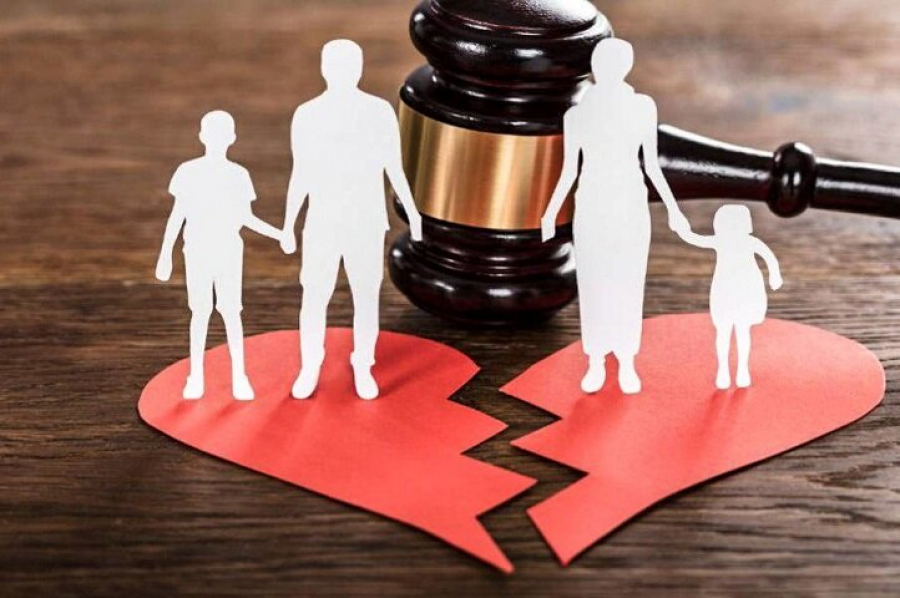The coronavirus is not to blame
Considering the economic crises that have come about in the wake of the epidemic and the compulsory home-isolation of families, it is obvious that family issues will be exacerbated, but it would be amiss to think that the global family crisis is the outcome of the coronavirus and that it has been created in the last few months. What we see is the result of a not-so-clandestine collapse which started several decades ago, and it has only found an opportunity to show itself more now. France, which is currently concerned about the exacerbation of domestic violence following stay-at-home orders, has always had one of the highest rates of domestic violence in Europe. Euronews has reported that every year, approximately 219,000 women are subjected to violence in France and that every three days, one woman is killed by her husband or partner.[iv] Of course, the crisis is not limited to France. The National Coalition Against Domestic Violence (NCADV) has announced in a shocking report that in the United States of America, every minute 20 women suffer physical harm at home, which amounts to more than 10 million victims every year, and out of every 15 children, one is personally a witness to this violence.[v] It has been reported that children and teenagers in America commit approximately 215,000 serious, violent crimes.[vi] Research findings show that abusive parents, divorce, single-parent families, weak parent-child ties, lack of proper supervision of children, and other causes are among the most important factors that cause and exacerbate child and adolescent violence. And, all of these factors find meaning in the family environment.[vii] Furthermore, in the majority of different types of juvenile delinquency, the percentage of delinquent children who do not live with their families is higher than those who do.[viii] In fact, it is the crisis in the family that has caused the crisis in society.
What is the root of the crisis?
It may be wrongly believed that these family crises are the cost that modern human beings have had to pay to modernize, and that in order to build a civilization, there is no choice other than to depart from traditional patterns of behavior. Thus, the family is one of the institutions that must forego its earlier traditions. However, it is impossible to transfer cultural mores and build a civilization without the family institution.[ix] Zygmunt Bauma (1925), who introduced the idea of liquid modernity in his book titled “Liquid Love,”[x] explains that the concept of modernity which humankind has always been in pursuit of never materialized. That which did materialize was a deviation from the original idea, which has given rise to a world of contradictions. Human and family relationships have not been shielded from these contradictions. He believes that the capitalization of everything and the tendency towards unrestricted freedom have made long-term commitment in romantic relationships tiresome. People are worried that stable relationships will limit their freedom. Thus, commitments, just like everything else, must have a beginning and an end. [xi] Therefore, one may end relationships as soon as they become annoying.[xii] He continues on to explain that in these circumstances, even childbearing is viewed from a consumerist perspective. If it is not deemed to be cost-effective, it is reduced.[xiii] He compares today’s culture of consumption with the culture of production in the past and argues that ultimately, the only way out of the current, deteriorating liquid condition is to relinquish family consumption and return to building the family.[xiv] Otherwise, it will be impossible to build a society.
Such an analysis ultimately results in prescribing a new definition of human relationships in the modern world, which more than anything must cleanse the family of the consumerist attitude and rebuild its bonds based on a return to love and compassion.
What should be done?
The Islamic Revolution in Iran, as the reviver of the religious way of life in modern times, has a different view of the family. From this perspective, the society and the family cannot separately and independent from each other traverse their path to transcendence. The human body is composed of cells. The death, deterioration and illness of these cells result in the illness of the body. If the illness of the cells intensifies, it will lead to a dangerous situation for the entire human body. Likewise, society is composed of its own cells, or families. Each family is one cell in the body of society. When these cells are healthy and work properly, society as a whole will be healthy.[xv] Therefore, a society that is estranged from the family is chaotic and unreliable. It is a society where the cultural, intellectual and ideological traditions of one generation are not passed on to the next generation, and the education of human beings is not carried out easily and smoothly.[xvi]
Of course, it is wrong to conclude that the family is simply an environment for educating future generations. In a healthy family, not only the children but also parents are subjected to the process of education, and parents do not simply pass on what they had learned before marriage.[xvii] The identities of the couple in this environment are redefined and their children are educated in the process of this symbiosis, such that the outcome of this three-member society flows out into society. For this reason, Imam Khamenei describes the family using the word “tayyibah”[xviii] (immaculate) from the Qur’an. The difference between “immaculate” and “pure” is that immaculate is pure in itself and spreads purity to its surroundings.
The human world is an arena for battling obstacles in order to achieve natural, human aspirations. The modern world has doubled the controversies and anxieties, which exist in this arena. This chaos makes it all the more necessary to have a safe refuge today.[xix] A monotheistic person, who is living in this world, first finds peace and tranquility in the arms of the family and then transfers the fruits of this to society.[xx] From the Islamic standpoint, this is the ideal state of the family, and the path to building an Islamic civilization must pass along this path.
The first requirement to safeguarding the family environment is that the three essential elements of the family – the wife, husband and children – should be respected by society and the law.[xxi] The reason why we see the family coming to a crisis in modern Western societies is mostly due to disparaging the importance of the family institution and transforming it from a constant, stable institution to a commodity.[xxii] It is obvious that in a society where families are shaken, the foundations of civil life will also shake.[xxiii]
One of the most important consequences of modernity for the family institution is the shift in the roles of its main elements, which has inevitably led to the violation of the rights of its members,[xxiv] be it the wife, the husband or even the child. The framework of a family is defined based on the rights and duties of each element of the family and the role that each of the elements has to fulfill. When, regardless of the reason, the mother does not have the opportunity to carry out her role completely, when a father is reduced to an economic element and cannot function in his full capacity in his role, or when children do not connect fully with their parents, the family begins a downward spiral. It reveals its shakiness in times of crisis. In contrast, if all the elements of a family fulfill their functions to the fullest, no circumstances can cause irreparable damage to the foundation of that family.
The Coronavirus is an example
The coronavirus crisis was initially seen to be a challenge for medical science, an unknown virus that had been created in an unknown process and that had entangled the global medical community. Under such circumstances, only those societies, which were medically advanced and had more facilities for the diagnosis and treatment of this virus, could hope for a way out of this crisis . However, after the passage of a few weeks from the onset of this global struggle, medical science failed to offer much help in this situation, and modern human beings had no choice other than to retreat into their homes. Homes were needed that were not just a place to sleep or a temporary residence. Rather, they needed to be a safe shelter, which was meant to protect us from this crisis. Only a home that is the residence of a healthy family can fulfill this role. Self-isolation at home may appear to be something passive since its sole purpose is to keep away from the disease and slow down the rate of its spread. However, global experience during this time shows that families play other important roles in managing this crisis. The management of negative emotions that have been created in the wake of this crisis, inexpensive home remedies as opposed to the exorbitant cost of hospitalization, the shortage of medical equipment, continuing education at home when scientific and educational centers are shut down, and other such functions are examples of the functions that families fulfill in such a situation. And, these functions can only be carried out in homes that have elements of a family in proper arrangement and harmony. Keeping these points in mind, it would not be extravagant to say that the coronavirus was managed better in countries with strong family values in comparison to countries with more advanced medical capabilities. In countries with shaky family foundations, self-isolation at home is not tolerable and it gives rise to another crisis. But in our country, family members came together. With the active role, which mothers took with their patience and constructive behavior, they exhibited a good performance in dealing with the recent problems.[xxv]
This concrete example is a visible sign showing the need for family-centered discourses to once again reaffirm the importance of the family institution. It is also a warning to the societies that undervalue the family to discontinue the great sin of discouraging people from forming a family. Because, it is the family that serves as a place of refuge for us in times of crisis, and it welcomes us with open arms when the doors to all gatherings and offices are closed. Without these welcoming arms, we have no other place of refuge in contemporary times…
[i] https://www.dictionary.com/e/s/new-words-we-created-because-of-coronavirus/#covidivorce
[ii] www.euronews.com/amp/2020/03/28/domestic-violence-cases-jump-30-during-lockdown-in-france
[iii] https://www.economist.com/graphic-detail/2020/04/22/domestic-violence-has-increased-during-coronavirus-lockdowns
[iv] Ibid.
[v] https://ncadv.org/statistics
[vi] https://www.statista.com/statistics/477466/number-of-serious-violent-crimes-by-youth-in-the-us/
[vii] http://www.surgeongeneral.gov/library/youthviolence
[viii] https://aspe.hhs.gov/basic-report/partial-listing-problems-facing-american-children-youth-and-families#exhibit2
[ix] Refer to the speech made by Imam Khamenei at a wedding ceremony on April 15, 1998.
[x] Liquid love: On the frailty of human bonds. Cambridge, UK: Polity Press. (2003).
[xi] Ibid, pp. 11-14.
[xii] Ibid, p. 16.
[xiii] Ibid, p. 37.
[xiv] Ibid, pp. 122 and 144.
[xv] Refer to the speech made by Imam Khamenei at a wedding ceremony on May 29, 2002.
[xvi] Refer to the speech made by Imam Khamenei at a wedding ceremony on January 19, 1999.
[xvii] Refer to the speech made by Imam Khamenei at a wedding ceremony on May 5, 1995.
[xviii] Reference to the Holy Qur’an, 14:24.
[xix] Refer to speeches made by Imam Khamenei at wedding ceremonies on December 25, 1996 and July 22, 1997.
[xx] Reference to the Holy Qur’an, 7:179 and 30:21.
[xxi] Refer to the speech made by Imam Khamenei at a wedding ceremony on April 08, 1998.
[xxii] Refer to the speech made by Imam Khamenei at a wedding ceremony on April 13, 1999.
[xxiii] Refer to the speech made by Imam Khamenei at a wedding ceremony on January 29, 1998.
[xxiv] Refer to the speech made by Imam Khamenei at a wedding ceremony on March 12, 2000.
[xxv] Refer to statements made by Imam Khamenei on May 10, 2020 during a videoconference with the National Committee on Combatting Coronavirus.


















